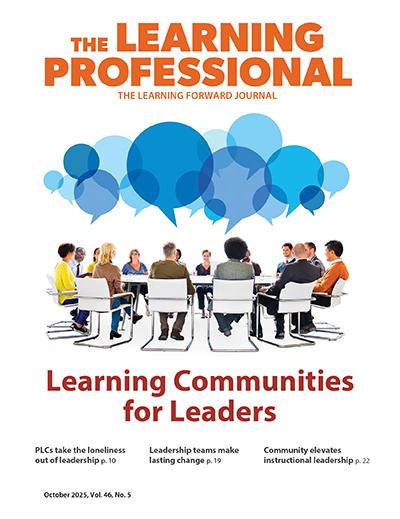Task Mastery
A Backward Approach To Designing Instruction Propels Teaching Forward
By Suzanne Simons
Categories: Collaboration, Teacher leadershipDecember 2016
Read the remaining content with membership access. Join or log in below to continue.
Sed ut perspiciatis unde omnis iste natus error sit voluptatem accusantium doloremque laudantium, totam rem aperiam, eaque ipsa quae ab illo inventore veritatis et quasi architecto beatae vitae dicta sunt explicabo. Nemo enim ipsam voluptatem quia voluptas sit aspernatur aut odit aut fugit, sed quia consequuntur magni dolores eos qui ratione voluptatem sequi nesciunt. Neque porro quisquam est, qui dolorem ipsum quia dolor sit amet, consectetur, adipisci velit, sed quia non numquam eius modi tempora incidunt ut labore et dolore magnam aliquam quaerat voluptatem.
References
Borko, H. (2004). Professional development and teacher learning: Mapping the terrain. Educational Researcher, 33(8), 3-15.
City, E.A., Elmore, R.F., Fiarman, S.E., & Teitel, L. (2009). Instructional rounds in education. Cambridge, MA: Harvard Education Press.
Franke, M.L., Carpenter, T.P., Levi, L., & Fennema, E. (2001). Capturing teachers’ generative change: A follow-up study of professional development in mathematics. American Educational Research Journal, 38(3), 653-689.
Jensen, B., Sonnemann, J., Roberts-Hull, K., & Hunter, A. (2016). Beyond PD: Teacher professional learning in high-performing systems. Washington, DC: National Center on Education and the Economy.
Levine, T.H. & Marcus, A.S. (2010). How the structure and focus of teachers’ collaborative activities facilitate and constrain teacher learning. Teaching and Teacher Education, 26(3), 389-398.
Murphy, J. (2016). Creating instructional capacity. Thousand Oaks, CA: Corwin.
Owen, S. (2003). School-based professional development and building morale, professionalism and productive teacher learning practices. Journal of Education Enquiry, 4(2), 102-128.
Penuel, W., Fishman, B., Yamaguchi, R., & Gallagher, L.P. (2007, December). What makes professional development effective? Strategies that foster curriculum implementation. American Educational Research Journal, 44(4), 921-958.
Penuel, P., Sussex, W., Korbak, C., & Hoadley, C. (2006, December). Investigating the potential of using social network analysis in educational evaluation. American Journal of Evaluation, 27(4), 437-451.
Categories: Collaboration, Teacher leadership
Recent Issues
MAXIMIZING RESOURCES
August 2025
This issue offers advice about making the most of professional learning...
MEASURING LEARNING
June 2025
To know if your professional learning is successful, measure educators’...
NAVIGATING NEW ROLES
April 2025
Whether you’re new to your role or supporting others who are new,...
LEARNING DESIGNS
February 2025
How we learn influences what we learn. This issue shares essential...








